Paneer is a fresh Indian cottage cheese that is easy to make. Be it appetizers or main course, side dishes or desserts, paneer has many uses in Indian cuisine, from paneer starters to paneer masala.
I love paneer!! Many people always ask what is it? A question I never know how to answer as there is nothing to compare it to. People say it is cottage cheese, which I guess is the closest thing we get to it.
Paneer is a popular dish in the Indian subcontinent and has become more and more popular in Europe over time. You will find paneer in most major supermarkets, but it can never replace homemade fresh paneer. Why would you buy ordinary plastic-wrapped paneer when it is so simple to make yourself in any case?
Many believe that paneer or Indian Cottage cheese is of Indian Origin. However, history shows that paneer was actually brought to India by the Turks and the Persians back in the 16th century. Some also say that the Portuguese brought it to Bengal, India in the 17th century, where it is known as chhena or chhana. Paneer comes from the Turkish word ‘Peynir’ or the Persian word ‘panir’ which means cheese.
Making paneer at home can be quite satisfying as it is pretty easy to make. From appetizers to main courses, side dishes, and even desserts, paneer is a popular ingredient in many vegetarian and gluten-free dishes in India. It can also be used in many savory dishes of cottage cheese or some fruit and cottage cheese snacks too!
So onwards! Let’s find out how easy it is to make paneer.
What Ingredients do you need to make Paneer?
All you need is some whole milk and lemon juice or vinegar.
How to make Paneer at Home?
Pour all the milk into a large pan and place over medium heat to bring it to a boil. Make sure to stir it often so that it doesn’t burn at the bottom and keep an eye on it so that it doesn’t boil over.
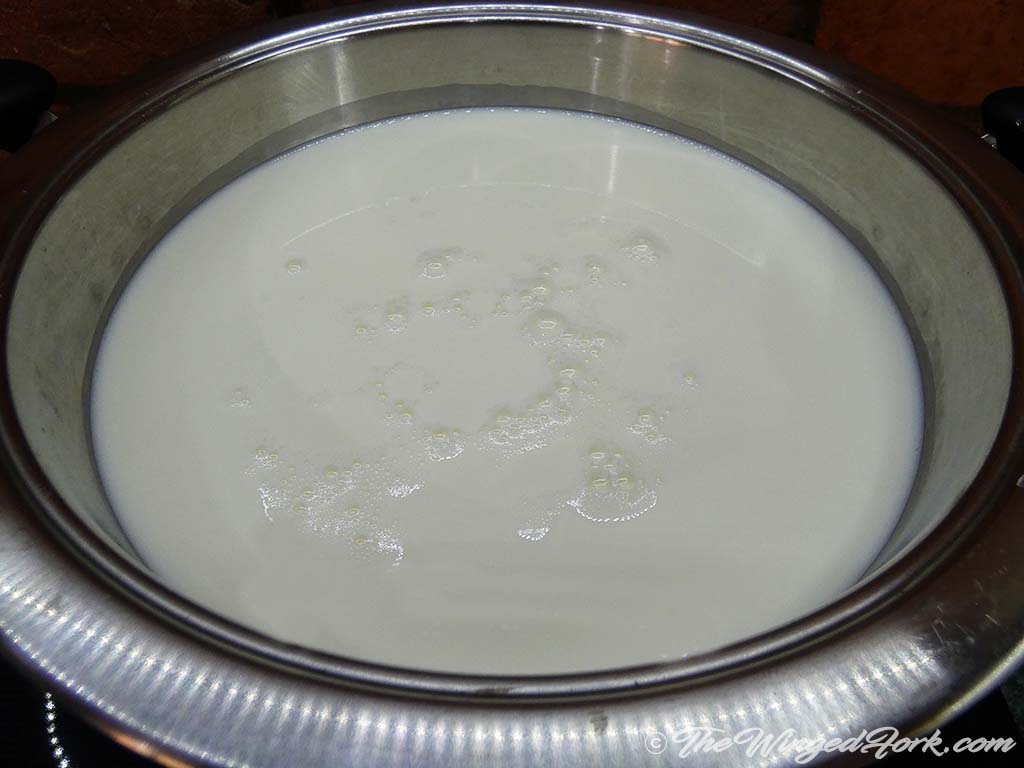
Juice the lemons and put them through a strainer/cheesecloth to collect all the pulp and pits. The juice will be poured into the milk and you do not want any pulp or pits in your paneer.

Once the milk starts to boil remove from the heat and slowly pour in the lemon juice/vinegar whilst stirring the milk gently. Continue adding the lemon juice/vinegar until the milk separates. You should see clumps of curd with a green/yellowish liquid (the whey).

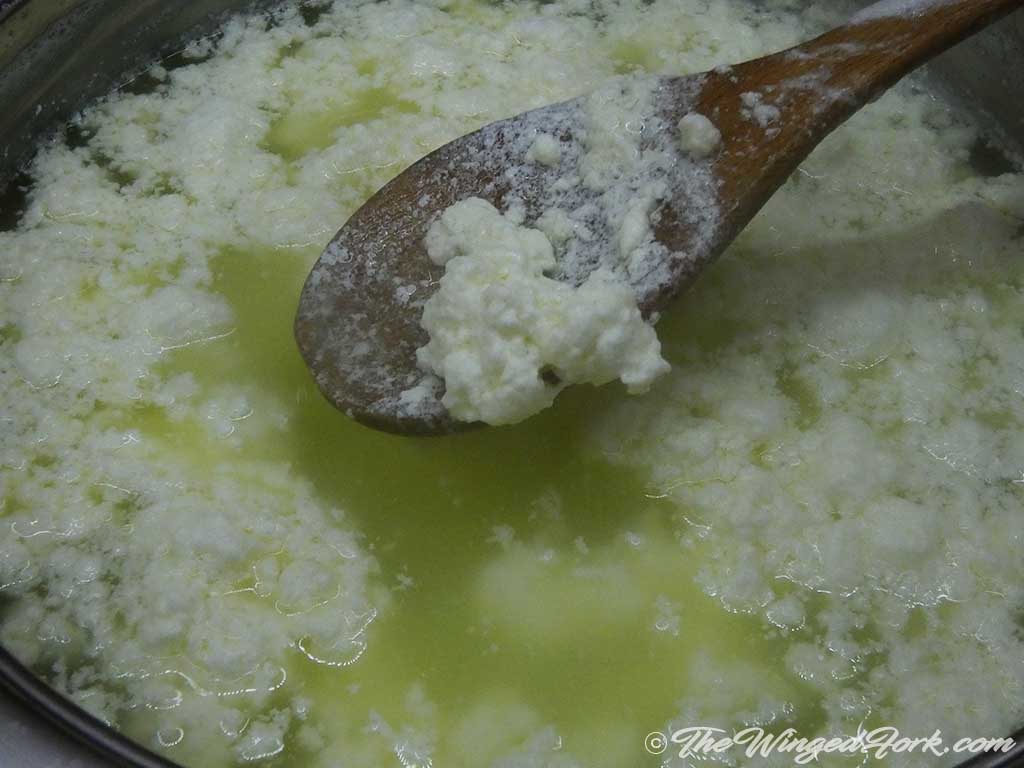
Line the colander with a cheesecloth and place the lined colander into the sink. Slowly pour the separated milk through the lined colander.
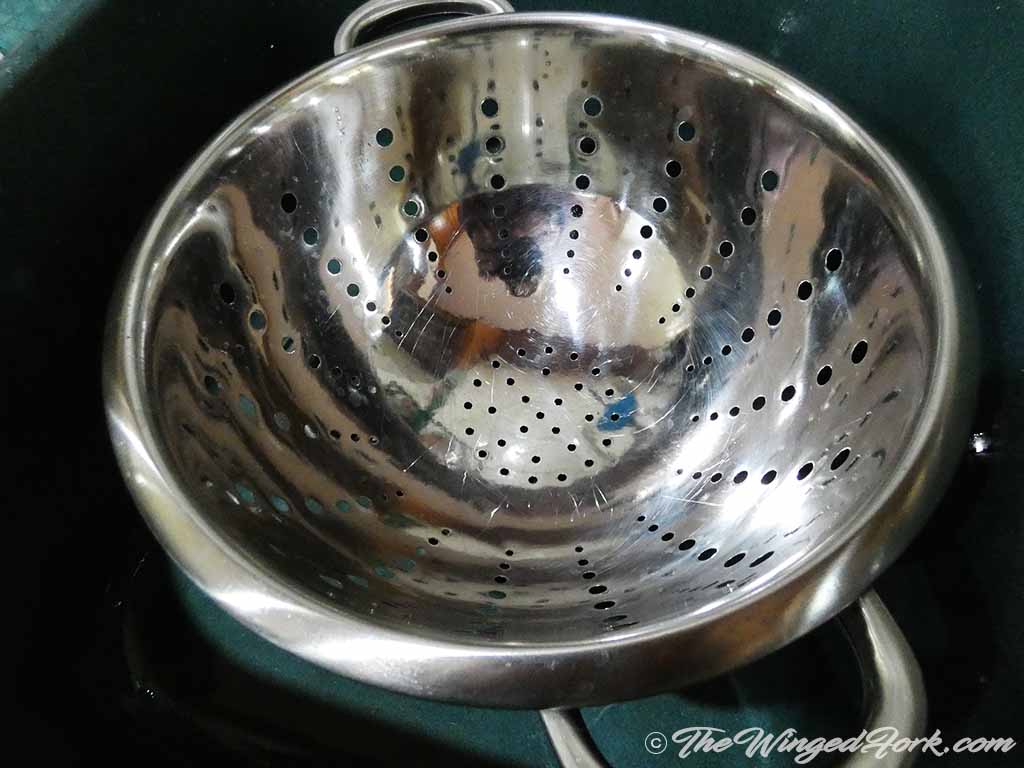
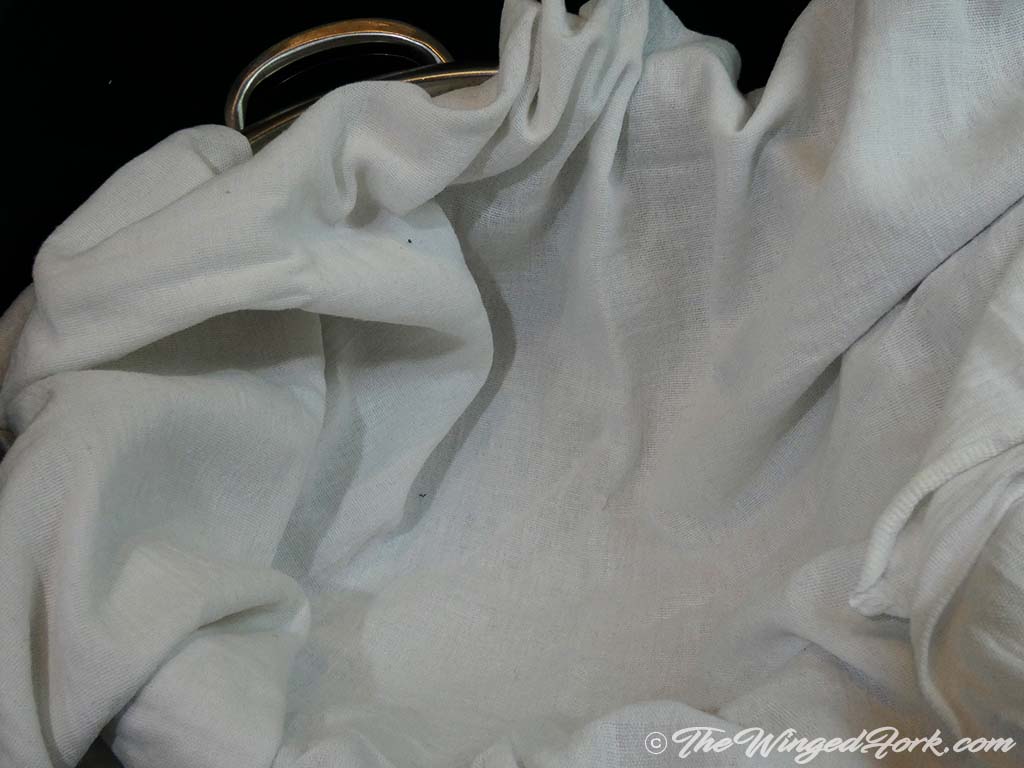
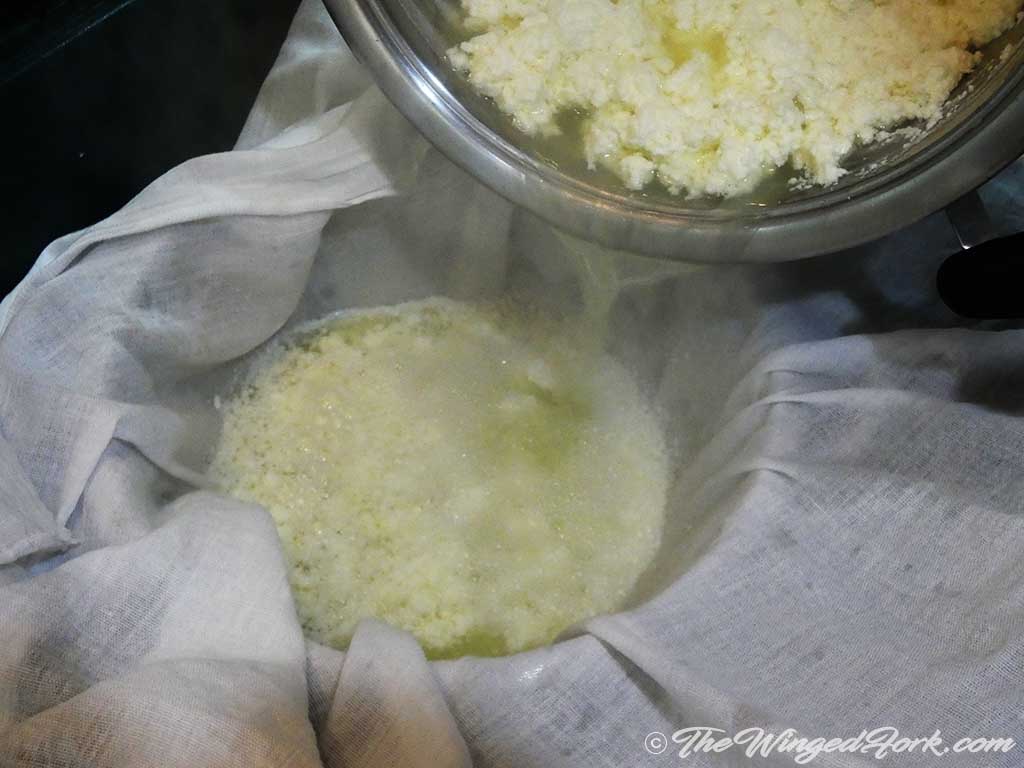
Rinse the curd whilst in the colander under cold water to remove the lemon juice and remaining whey.

Gather the corners of the cheesecloth and twist the end together so that the curd is squeezed into a ball shape and the excess liquid gets pushed out.
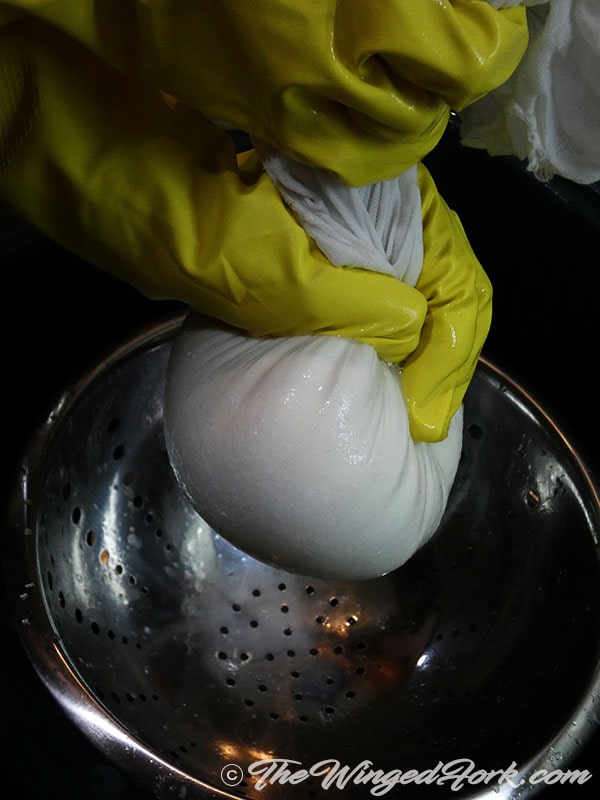
Press the curd flat whilst still in the cheesecloth on a counter removing as much of the excess liquid as possible. Place the excess cloth smoothly over the top of the flattened paneer.
If you have a meshed surface, place the paneer on it, and using a chopping board, place this on the paneer with a heavyweight to press the paneer.

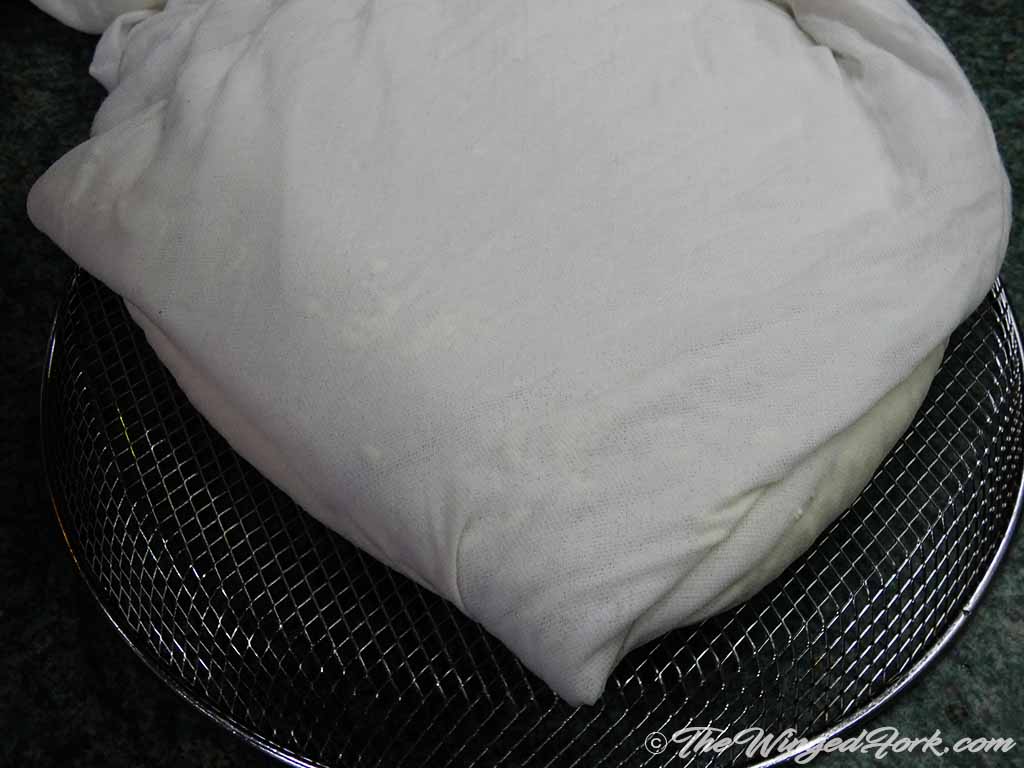
After a few hours, the paneer should be dried out enough and pressed into a firm shape. With 6 pints or 3 liters of milk, you’ll get about 500 grams of paneer.
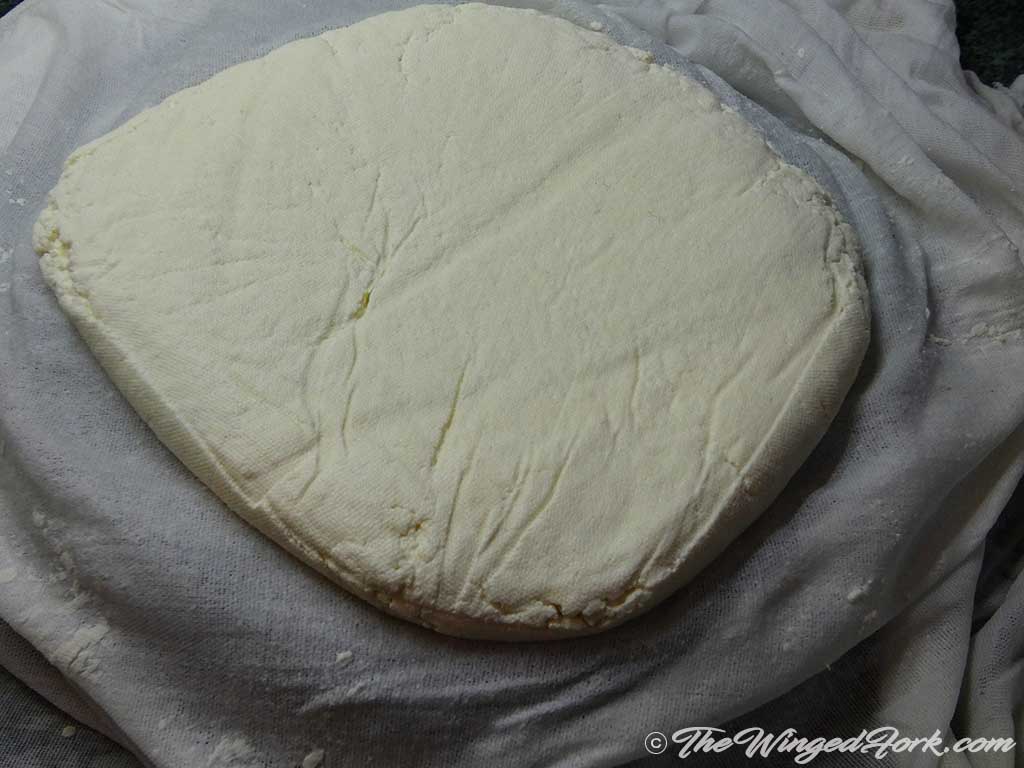
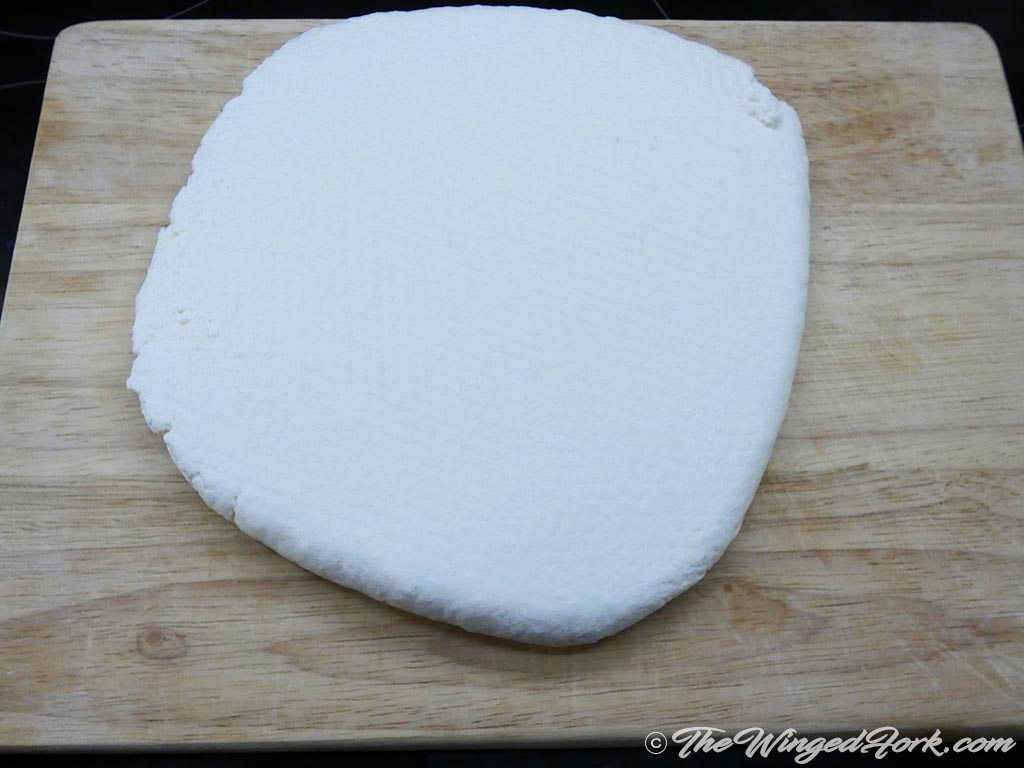
Cut it into bite-size chunks and add to your favorite recipe. Some of my favorites are paneer masala, paneer stir fry, spicy paneer starters, and so many more.
What Recipes Can I Use Paneer In?
You can use paneer in many recipes. Some popular dishes made with Indian cottage cheese are paneer masala, paneer tikka, paneer vegetable korma, paneer stir fry, paneer bhurji, paneer mattar, paneer masala fry starters, paneer biryani, and more.
You can also use paneer as a replacement for cream cheese as we do in our summery mango cheesecake recipe.
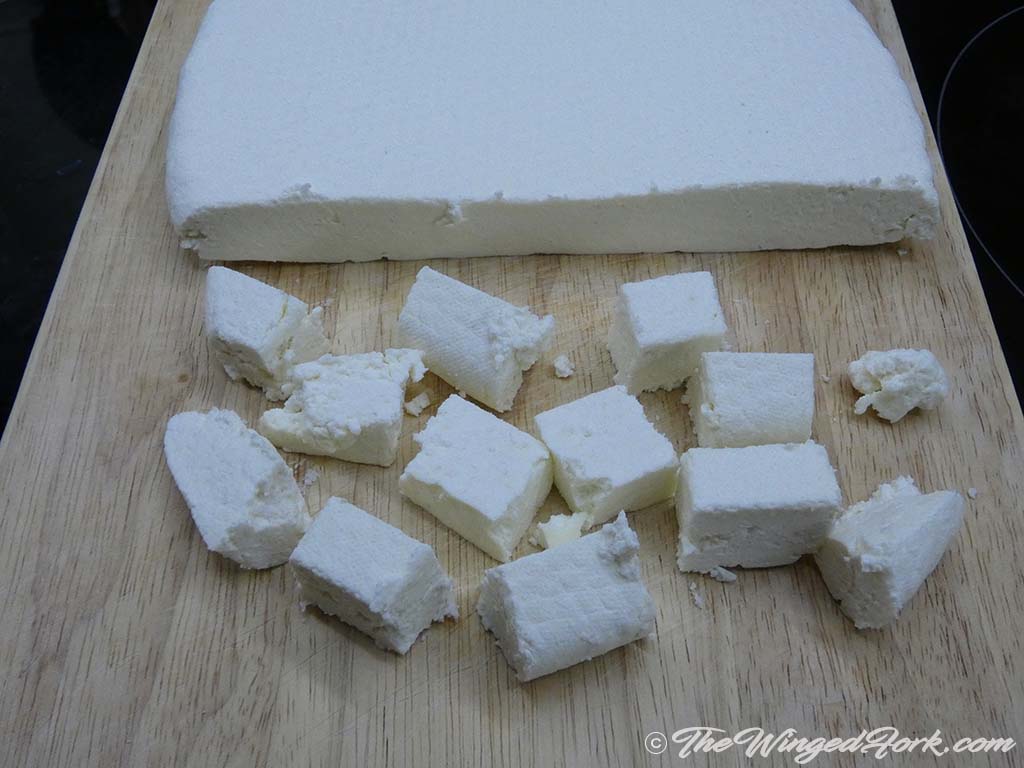

How to make Paneer? Indian Cottage Cheese
Click the stars to add your rating! Left you don’t like it, right you love it!
Ingredients
- 6 Pints Whole Milk
- 3-4 Lemons or equivalent amount of Vinegar
Instructions
- Pour the milk into a large pot and bring to the boil.
- While the milk is heating up, juice the lemons and put the juice through a strainer to collect the pulp and pits.
- Once the milk has boiled, remove from the heat and pour in the lemon juice (or vinegar) whilst slowly stirring the milk.
- Add enough lemon juice/vinegar till you see the milk separate into curd and whey. If you don’t, you can add more lemon juice or vinegar till the whey and curd is completely separated. The whey is a greenish/yellowish colour liquid once separated from the curd.
- Line a colander with a cheesecloth and place the lined colander into the sink.
- Strain the milk through the cheesecloth. Rinse under cold water to wash out the lemon juice or vinegar.
- Gather up the corners of the cloth, twist the cloth so that the curd is squeezed into a ball shape.
- Squeeze out the excess water and whey. Use some rubber gloves if it is still too hot to handle.
- Press the cheese flat on a counter whilst still in the cloth removing as much excess whey as possible.
- Place the flattened cheese onto a meshed surface laying the cloth smoothly over the top of the cheese.
- Place a chopping board on top of the flattened cheese. Place a weight on the chopping board (I use a 5 kilo weight).
- Leave for a few hours to drain out the last bit of excess whey.
- And your homemade Paneer is ready 🙂
Please click to rate the recipe! Left you don’t like it, right you love it!
Notes
- You can refrigerate the fresh cheese in an airtight container for up to a week. You can also freeze the cheese for up to several months.
- Paneer can be made a few days in advance, kept in the fridge ready to be used in your favourite recipe.
- If you have space in the fridge, or you are lucky enough to live in a cold country, keeping the paneer cold whilst it is setting helps to give it a firmer texture and makes it less crumbly.
- Mix in some dried chilli flakes and salt with the curd before pressing it to give it a spicy twist.
- Use some rubber gloves when squeezing out the curd if it is still too hot to handle.
Nutrition (Per Serving)
Disclaimer: Nutrition Information per serving is estimated by a third party software based on the ingredients used, and is for informational purposes only. It will vary from product to product, based on methods of preparation, origin and freshness of ingredients. Please consult the package labels of the ingredients you use, or chat with your dietician for specific details.
This printable recipe card is for home use only. For more recipes head over to AbbysPlate.comCooking Tips & Tricks
- Paneer can be made a few days in advance, kept in the fridge ready to be used in your favourite recipe.
- If you have space in the fridge, or you are lucky enough to live in a cold country, keeping the paneer cold whilst it is setting helps to give it a firmer texture and makes it less crumbly.
- Mix in some dried chilli flakes and salt with the curd before pressing it to give it a spicy twist.
- Use some rubber gloves when squeezing out the curd if it is still to hot to handle.
Questions about Making Paneer
What Is Paneer?
Paneer or Indian cottage cheese is a fresh Indian cheese that is made by mixing lemon juice in milk.
How Long Can I Store Paneer?
You can store paneer in a refrigerator in an air-tight container for up to a week or you can also freeze it for several months before using it in a recipe of your choice.
Can Paneer Be Eaten Raw?
Yes, paneer can be eaten raw because it is a cottage cheese. It has a dense and milky flavor when eaten raw.
If you want our traditional East Indian recipes on hand, the Abby's Plate Cookbook Series books are available online or in-store in most countries.
Latest Book:
East Indian Celebration
Festive Recipes from Abby's Plate
See the full list of books here!
Where Did Paneer Originate?
Paneer can be traced back to the Afghan and Persian rulers who introduced it mostly in Northern India in the 16th century, where it was made using either goat or sheep rennet. The word ‘paneer’ comes from the word Turkish and Persian word ‘peynir,’ which means cheese. Some also say the Portuguese brought it to Bengal in the 17th century where it is called chhena.
Other Indian Recipes You Might Like
- Kachumber Salad
- Amazing Watermelon Rind Fries
- Rose petal and coconut barfi
- Pickled onions Indian style
- Indian green chutney

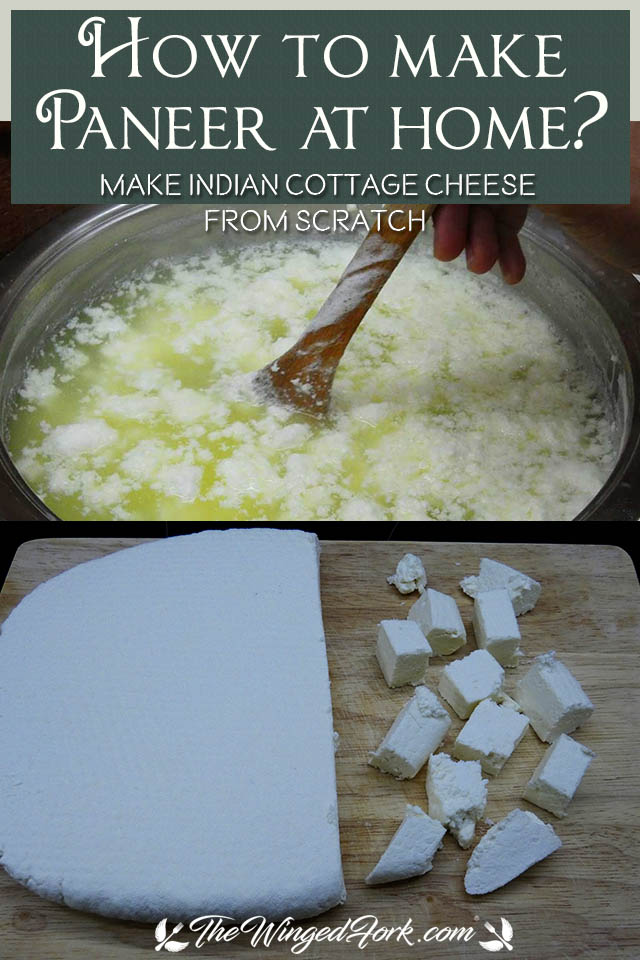
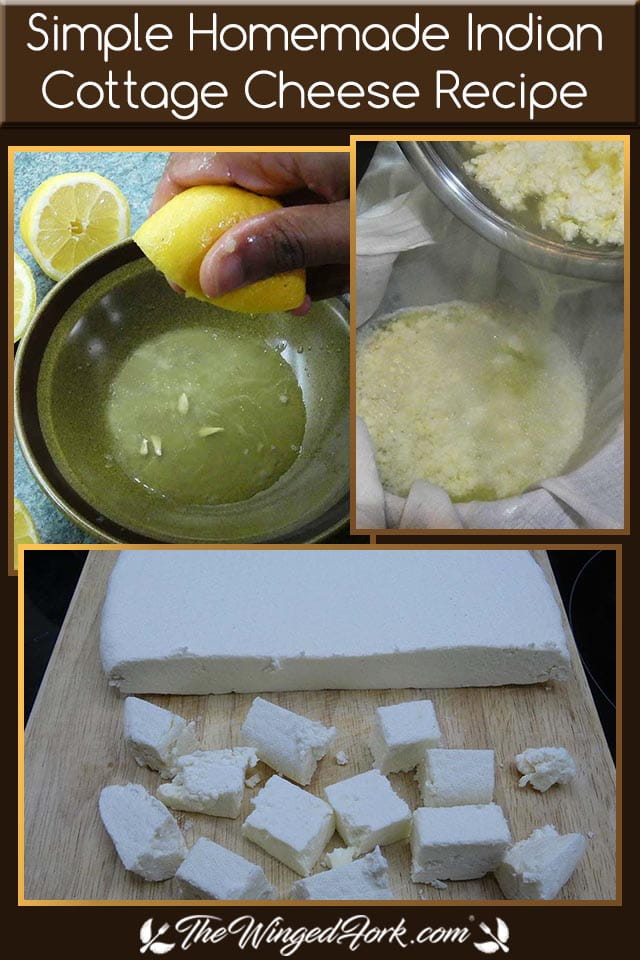

South African born and British bred, The Soz often takes to the skies. However the majority of the time these gravity-defying feats are for business and not pleasure. When she’s not writing about travel at TheWingedFork, The Soz loves spending time in the kitchen cooking traditional South African dishes, English food and spicy Indian meals with the help of her East Indian hubby Aaron!







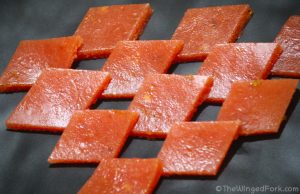

My sister shared this recipe link with me for me to try and I would like to thank you that you took so much effort for us making such a helpful post. I followed your steps and the paneer turned out to be the one from the market. Thank you so much.